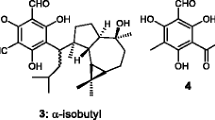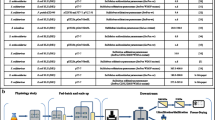Abstract
A new gene from the hyperthermophilic archaeon Sulfolobus solfataricus MT4, coding for a putative protein reported to show sequence identity with the phosphotriesterase-related protein family (PHP), was cloned by means of the polymerase chain reaction from the S. solfataricus genomic DNA. In order to analyse the biochemical properties of the protein an overexpression system in Escherichia coli was established. The recombinant protein, expressed in soluble form at 5 mg/l of E. coli culture, was purified to homogeneity and characterized. In contrast with its mesophilic E. coli counterpart that was devoid of any tested activity, the S. solfataricus enzyme was demonstrated to have a low paraoxonase activity. This activity was dependent from metal cations with Co2+, Mg2+ and Ni2+ being the most effective and was thermophilic and thermostable. The enzyme was inactivated with EDTA and o-phenantroline. A reported inhibitor for Pseudomonas putida phosphotriesterase (PTE) had no effect on the S. solfataricus paraoxonase. The importance of a stable paraoxonase for detoxification of chemical warfare agents and agricultural pesticides will be discussed.




Similar content being viewed by others
Abbreviations
- PTE:
-
Phosphotriesterase
- OPH:
-
Organophosphate hydrolase
- OPD:
-
Organo-phosphate-degrading enzyme
- OPs:
-
Organophosphates
- SsoPox:
-
Sulfolobus solfataricus paraoxonase
- ePHP:
-
E. coli phosphotriesterase-related protein
- pNP:
-
P-nitrophenyl
- LB:
-
Luria-Bertani
- IPTG:
-
Isopropyl-β-D-thiogalactopyranoside
- PVDF:
-
Polyvinylidene fluoride
- EST2:
-
Esterase 2
References
Aubert SD, Li Y, Raushel FM (2004) Mechanism for the hydrolysis of organophosphates by the bacterial phosphotriesterase. Biochemistry 43:5707–5715
Bencharit S, Morton CL, Xue Y, Potter PM, Redinbo MR (2003) Structural basis of heroin and cocaine metabolism by a promiscuous human drug-processing enzyme. Nat Struct Biol 10:349–356
Benning MM, Kuo JM, Raushel FM, Holden HM (1994) Three-dimensional structure of phosphotriesterase: an enzyme capable of detoxifying organophosphate nerve agents. Biochemistry 33:15001–15007
Benning MM, Kuo JM, Raushel FM, Holden HM (1995) Three-dimensional structure of the binuclear metal center of phosphotriesterase. Biochemistry 34:7973–7978
Benning MM, Hong SB, Raushel FM, Holden HM (2000) The binding of substrate analogs to phosphotriesterase. J Biol Chem 275:30556–30560
Benning MM, Shim H, Raushel FM, Holden HM (2001) High resolution X-ray structures of different metal-substituted forms of phosphotriesterase from Pseudomonas diminuta. Biochemistry 40:2712–2722
Brown KA (1980) Phosphotriesterases of Flavobacterium sp. Soil Biol Biochem 12:105–112
Brown WC, Campbell JL (1993) A new cloning vector and expression strategy for genes encoding proteins toxic to Escherichia coli. Gene 127:99–103
Buchbinder JL, Stephenson RC, Dresser MJ, Pitera JW, Scanlan TS, Fletterick RJ (1998) Biochemical characterization and crystallographic structure of an Escherichia coli protein from the phosphotriesterase gene family. Biochemistry 37:5096–5106
Caldwell SR, Newcomb JR, Schlecht KA, Raushel FM (1991) Limits of diffusion in the hydrolysis of substrates by the phosphotriesterase from Pseudomonas diminuta. Biochemistry 30:7438–7444
Cheng, T-C, Harvey SP, Stroup AN (1993). Purification and properties of a highly active organophosphorus acid anhydrolase from Alteromonas undina. Appl Environ Microbiol 59:3138–3140
Cheng TC, Rastogi VK, DeFrank JJ, Sawiris GP (1998) G-type nerve agent decontamination by Alteromonas prolidase. Ann N Y Acad Sci 864:253–286
Donarski WJ, Dumas DP, Heitmeyer DH, Lewis VE, Raushel FM (1989) Structure-activity relationships in the hydrolysis of substrates by the phosphotriesterase from Pseudomonas diminuta. Biochemistry 28:4650–4655
Dumas DP, Caldwell SR, Wild JR, Rauschel FM (1989) Purification and properties of the phosphotriesterase from Pseudomonas diminuta. J Biol Chem 264:19659–19665
Dumas DP, Durst HD, Landis WG, Raushel FM, Wild JR (1990) Inactivation of organophosphorus nerve agents by the phosphotriesterase from Pseudomonas diminuta. Arch Biochem Biophys 277:155–159
Harel M, Aharoni A, Gaidukov L, Brumshtein B, Khersonsky O, Meged R, Dvir H, Ravelli RB, McCarthy A, Toker L, Silman I, Sussman JL, Tawfik DS (2004) Structure and evolution of the serum paraoxonase family of detoxifying and anti-atherosclerotic enzymes. Nat Struct Mol Biol 11:412–419
Higerd TB, Spizizen J (1973) Isolation of two acetyl esterases from extracts of Bacillus subtilis. J Bacteriol 114:1184–1192
Hong SB, Raushel FM (1999) Stereochemical constraints on the substrate specificity of phosphotriesterase. Biochemistry 38:1159–1165
Horne I, Sutherland TD, Harcourt RL, Russell RJ, Oakeshott JG (2002) Identification of an opd (organophosphate degradation) gene in an Agrobacterium isolate . Appl Environ Microbiol 68:3371–3376
Horne I, Qiu X, Russell RJ, Oakeshott JG (2003) The phosphotriesterase gene opdA in Agrobacterium radiobacter P230 is transposable. FEMS Microbiol Lett 222:1–8
Hou X, Maser RL, Magenheimer BS, Calvet JP (1996) A mouse kidney- and liver-expressed cDNA having homology with a prokaryotic parathion hydrolase (phosphotriesterase)-encoding gene: abnormal expression in injured and polycystic kidneys. Gene 168:157–63
Laemmli U (1970) Cleavage of structural proteins during the assembly of the head of bacteriophage T4. Nat (Lond) 227:680–685
Leatherbarrow RJ (1992) Grafit version 3.0. Erithacus Softwere Ltd, Staines
LeJeune KE, Mesiano AJ, Bower SB, Grimsley JK, Wild JR, Russell AJ (1997) Dramatically stabilised phosphotriesterase-polymers for nerve agent degradation. Biotech Bioeng 54:105–114
LeJeune KE, Wild JR, Russell AJ (1998) Nerve agents degraded by enzymatic foams. Nature 395:27–28
Lewis VE, Donarski WJ, Wild JR, Raushel FM (1988) Mechanism and stereochemical course at phosphorus of the reaction catalyzed by a bacterial phosphotriesterase. Biochemistry 27:1591–1597
Manco G, Adinolfi E, Pisani FM, Ottolina G, Carrea G, Rossi M (1998) Overexpression and properties of a new thermophilic and thermostable esterase from Bacillus acidocaldarius with sequence similarity to hormone-sensitive lipase subfamily. Biochem J 332:203–212
Matsudaira P (1987) Sequence from picomole quantities of proteins electroblotted onto polyvinylidene difluoride membranes. J Biol Chem 262:10035–10038
Millard CB, Lockridge O, Broomfield CA (1998) Organophosphorus acid anhydride hydrolase activity in human butyrylcholinesterase: synergy results in a somanase. Biochemistry 37:237–247
Munnecke DM (1976) Enzymatic hydrolysis of organophosphate insecticides, a possible pesticide disposal method. Appl Environ Microbiol 32:7–13
Omburo GA, Kuo JM, Mullins LS and Rauschel FM (1992) Characterization of the zinc binding site of bacterial phosphotriesterase. J Biol Chem 267:13278–13283
Oosterban RA, Janz HS (1965) In: Florkin M, Stotz EH (eds) Comprehensive Biochemistry vol. 16. Elsevier, Amsterdam pp 1–54
Raushel FM (2002) Bacterial detoxification of organophosphate nerve agents. Curr Op Microbiol 5:288–295
Richins RD, Kaneva I, Mulchandani A, Chen W (1997) Biodegradation of organophosphorus pesticides by surface-expressed organophosphorus hydrolase. Nat Biotechnol 15:984–987
Richins RD, Mulchandani A, Chen W (2000) Expression, immobilization and enzymatic characterisation of cellulose-binding domain-organophosphate hydrolase fusion enzymes. Biotechnol Bioeng 69:591–596
Rochu D, Viguie N, Renault F, Crouzier D, Froment MT, Masson P (2004) Contribution of the active site metal cation to catalytic activity and to conformational stability of phosphotriesterase: a thermo- and pH-dependence study. Biochem J 380:627–633
Schrader G (1963) Die Entwicklung neur Insektizider Phosphor-saure-Ester, 3rd edn. Verlag Chemie, Weinheim
Sethunathan N, Yoshida T (1973) A Flavobacterium sp. that degrades diazinon and parathion. Can J Microbiol 19:873–875
She Q, Singh RK, Confalonieri F, Zivanovic Y, Allard G, Awayez MJ et al (2001) The complete genome of the crenarchaeon Sulfolobus solfataricus P2. Proc Natl Acad Sci USA 98:7835–7840
Siddavattam D, Khajamohiddin S, Manavathi B, Pakala SB, Merrick M (2003) Transposon-like organization of the plasmid-borne organophosphate degradation (opd) gene cluster found in Flavobacterium sp. Appl Environ Microbiol 69:2533–2539
Studier FW, Rosenberg AH, Dunn JJ and Dubendorff JW (1990) Use of T7 RNA polymerase to direct expression of cloned genes. Methods Enzymol 185:60–89
Acknowledgements
We thank Gabriella Fiorentino for Ssopox gene cloning, V. Carratore for amino terminal sequencing and the TIGEM-IGB DNA Sequencing Core for DNA sequencing. This work was supported with funding from Regione Campania Legge 41/94 and PNR Tecnologie Avanzate Tema 6 Biocatalisi. L.M. is a recipient of a fellowship from Regional Center of Competence on Industrial Biotechnology (BioTekNet).
Author information
Authors and Affiliations
Corresponding author
Additional information
Communicated by G. Antranikian
Rights and permissions
About this article
Cite this article
Merone, L., Mandrich, L., Rossi, M. et al. A thermostable phosphotriesterase from the archaeon Sulfolobus solfataricus: cloning, overexpression and properties. Extremophiles 9, 297–305 (2005). https://doi.org/10.1007/s00792-005-0445-4
Received:
Accepted:
Published:
Issue Date:
DOI: https://doi.org/10.1007/s00792-005-0445-4




